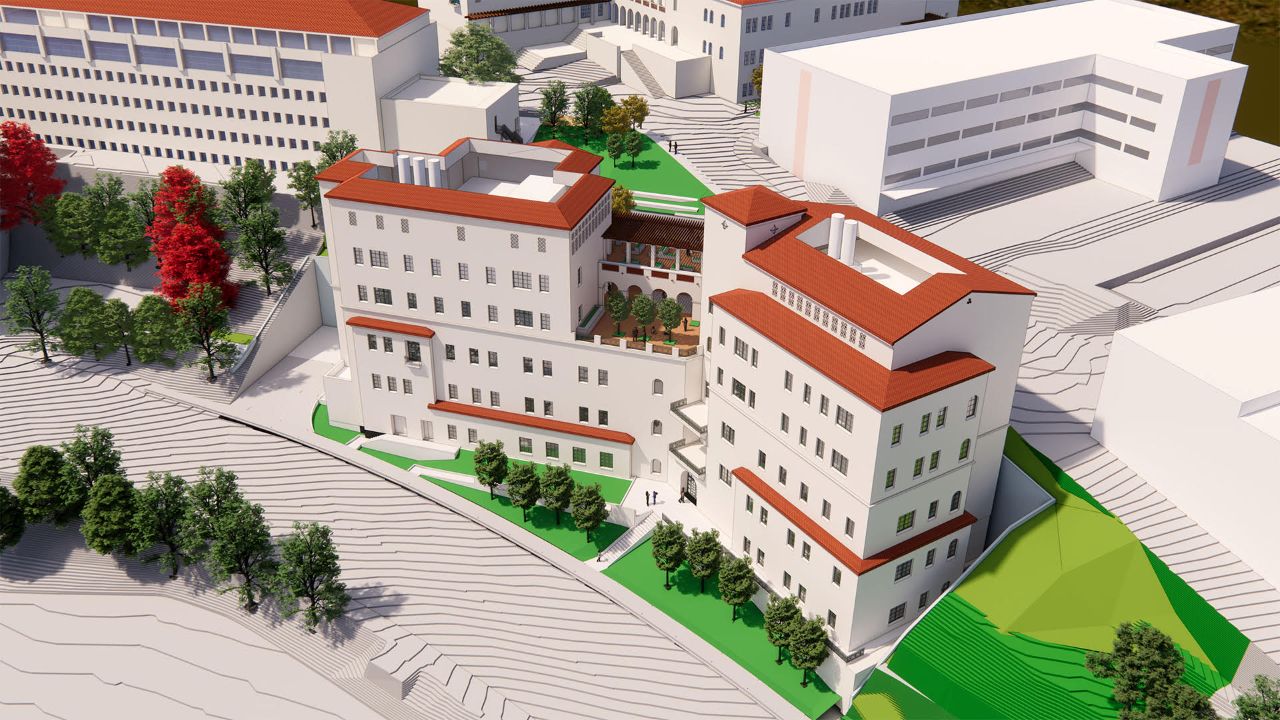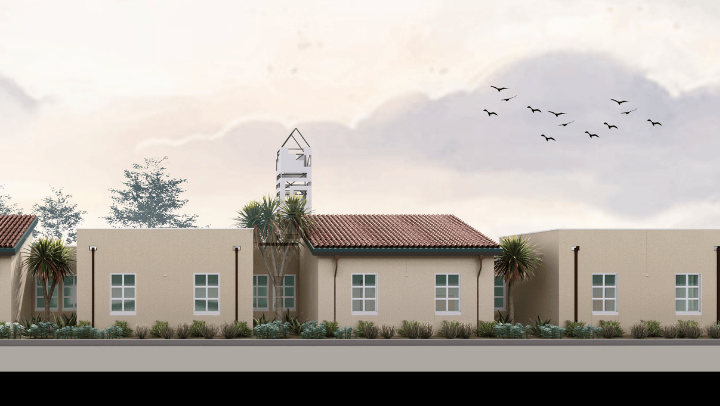SDSU approved to begin construction on new building for STEM
The CSU Board of Trustees approved the priority project during its January 2025 meeting, opening the path for SDSU to begin construction on a highly anticipated building that will significantly bolster STEM education and research.

The schematics and financing plan for San Diego State University’s new project for a building dedicated to STEM instruction and laboratory sciences was approved by the California State University Board of Trustees during the board’s January meeting.
The vote, which was unanimously approved, paves the way for construction of a new state-of-the-art building to replace North Life Sciences. That construction has now begun.
“We are deeply grateful to the CSU and the Board of Trustees for supporting this project, which has been in the queue for state capital outlay funding since the year I arrived, back in 2018-19. That is when, informed by the profound need expressed by our faculty and students, I first put it on the priority list,” said SDSU President Adela de la Torre.
The project, which is part of SDSU’s STEM Forward initiative, follows a multi-year advocacy effort and serves as an investment in both campus infrastructure and student and faculty success. Utilizing the objective facilities condition assessments from both 2014 and 2019, frequently used by CSU system campuses, the need for a modern life sciences building emerged as a new construction priority for the campus.
“Life science and basic science instruction are crucial to the most in-demand majors at SDSU,” de la Torre said. “With urgent demand from our workforce partners, SDSU – as a community-oriented institution – is well-positioned to make a lasting impact locally and worldwide.”
The building is slated to open during the 2027 academic year.
Once open, the building will include wet labs, computer labs, instructional labs, research labs, faculty offices and collaborative space for faculty and students.
“SDSU is at the forefront of generating knowledge, driving innovation and helping solve pressing global challenges, and this will create new instructional and research spaces for our faculty and students to convene, work, ideate and innovate,” said Jeff T. Roberts, College of Sciences dean, who de la Torre acknowledged during her Feb. 4 report to the University Senate on progress.
SDSU is the most research-intensive institution in the CSU system, generating more research than any other CSU campus. And the life sciences have long been an institutional priority within that portfolio.
“Investing heavily in innovation is not only essential but strategic for universities seeking to maintain relevance, contribute to societal well-being, and lead in a rapidly advancing world,” Roberts said. “Our faculty, researchers and students are already contributing to life-saving discoveries, and this investment ensures that SDSU continues to be part of a global network that shapes the future of healthcare.”
Life sciences research, in particular, informs public health policy, to include managing disease outbreaks and ensuring food safety and environmental protection. These researchers can and often do respond to health crises and environmental challenges, making them partners in shaping public health strategies. The life sciences are also key to addressing ecological challenges such as climate change, biodiversity loss and environmental degradation, to include fire prevention, resilience in multiple ecosystems and more sustainable food and agricultural practices.
“As a faculty member and molecular cell biologist, I see firsthand the critical role a dedicated life sciences building will have in advancing our mission to educate and innovate,” said Maya Capelson, an associate professor of biology, who spoke during the CSU board meeting.
“Biology is one of the fastest-growing industries in California, especially here in San Diego,” she said. “We are at the forefront of providing hands-on experiences to undergraduates, graduate students and future industry leaders to meet research, innovation, workforce and economic development demands for our state. A modern facility would directly expand our capacity to conduct transformative teaching, research and partnerships.”
Notably, San Diego – like Boston and San Francisco – exists within the third largest biotech cluster in the country, and there is a significant demand for workforce-ready students, well-trained and ready to contribute to accelerating this industry's innovation. In San Diego alone, nearly 60,000 life sciences jobs exist.
In moving forward with CSU approval, SDSU opted to forgo a renovation of the current Life Sciences North building and, instead, will construct a new building that can be used by current students, faculty and researchers and will also be flexible enough to accommodate incoming researchers and projects.
Tristan McDonnell, a cellular and molecular biology major, spoke in favor of the building at the recent CSU Board of Trustees meeting.
“Like many others at SDSU, I have a personal commitment to STEM education and research, and the development of better technologies, interventions and treatments needed for better individual and community health,” said McDonnell, who researches protein structure essential for regulating DNA, which could lead to better interventions for diseases like Alzheimer’s and ALS.
McDonnell, who plans to pursue a Ph.D. in biology, said that while he is slated to graduate next year from SDSU he cares deeply about the project.
“I passionately support this project. It is urgently needed to continue transformative STEM education, to foster collaboration among researchers, and to generate new knowledge benefiting all of us,” he said. “This is more than a building. It’s a vital investment in our future.”




